
Happy Sunday! We are about to watch our Sunday sermon online (you are welcome to join us anytime here). But I wanted to share a lovely activity to do with children today or sometime ahead of Easter Sunday. It’s called an Easter garden and you can do it with materials you can find in your backyard and pantry.
A few years I heard a speaker named Julie Cochran talk about her springtime travels to the English countryside and noticing that all the beautiful ancient churches had little “resurrection” gardens during the Easter season. She brought the tradition home to her family and I thought it was so neat that I wanted to share with y’all.
Easter gardens are a visual way we can teach our children about the Easter story. It gives small children something to do while you talk or read the Bible story. And older children (and adults!) can get really creative with their gardens.
You can probably find everything you need to create an Easter garden in your backyard and kitchen. You can make them in a container or in little spot in your backyard. You can be as simple or ornate as you want with the gardens. Some use plastic people figures much like a nativity scene.
Materials
- Large Dish, Bowl or Pot (or just make a special spot in your backyard!)
- Foil to Protect Dish
- Small Clay Pot
- Potting Soil
- Grass or Moss
- Flower Seeds, small potted flowers, or flowers from the backyard (If you have enough time to grow your own flowers, use the flower seeds, but potted flower do the job as well!)
- Handful of Small Rocks
- 1 Rock Large Enough to Cover Small Clay Pot (i.e. the tomb)
Symbolic Additions
- Thorny branches – represents Jesus’ crown of thorns
- Twigs – Cross
- Dogwood bloom – center of flower looks like crown of thorns
- Daffodil – Otherwise known as the Lenten Lily (new lift that rises up from the dark winter!)
- Easter egg – represents new life.
- Easter Lillies – represent the purity of Christ and shape of lily represents trumpet announcing the Risen King
Instructions
-
Choose your dish. I used a large bread bowl for our garden, but other people have used shorter terra cotta pots or planters deep enough to hold potted flowers. These can be done outside as well!
-
Use foil to protect your dish. If you are using a planter, you can skip this step.
-
Put potting soil in and cover the entire space.
-
Plant seeds in soil or plant potted flowers.
-
Place small clay pot in the middle. This will be the “tomb.”
-
Use small pebbles to make a pathway leading to the tomb.
-
Cover exposed areas with moss.
-
Place rock in front of the tomb.
-
On Easter Sunday, roll the stone away to show that Jesus is no longer in the tomb.
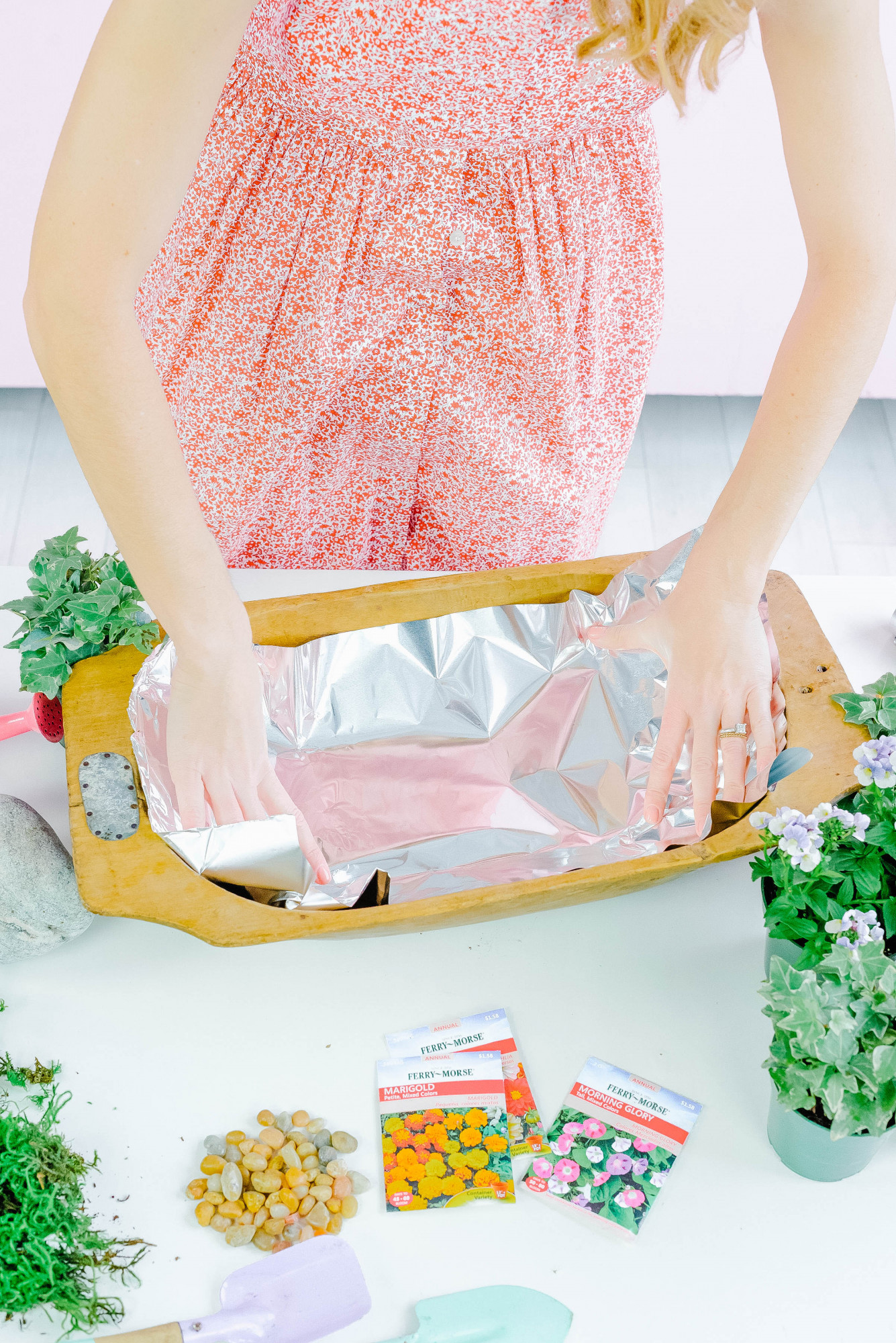
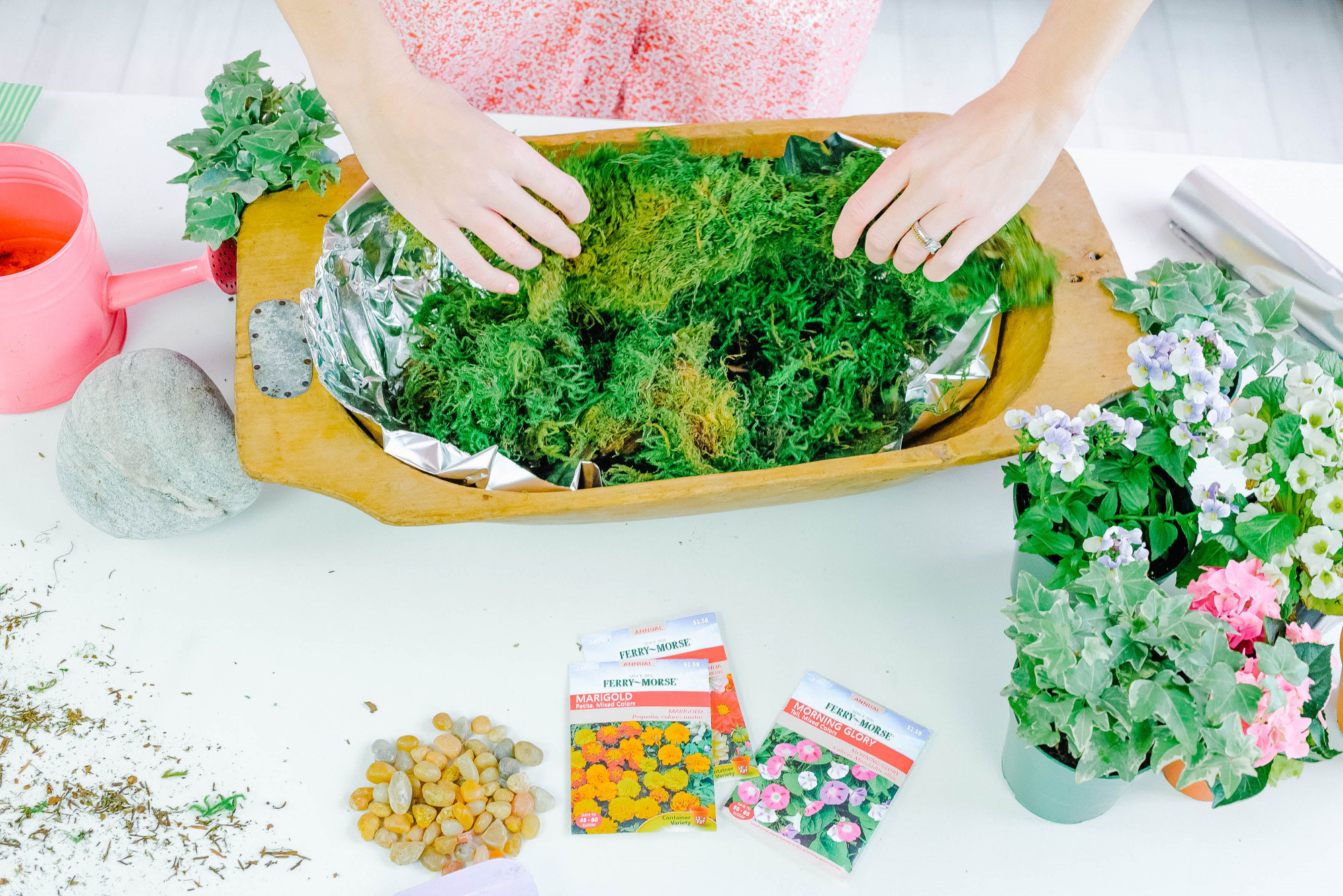
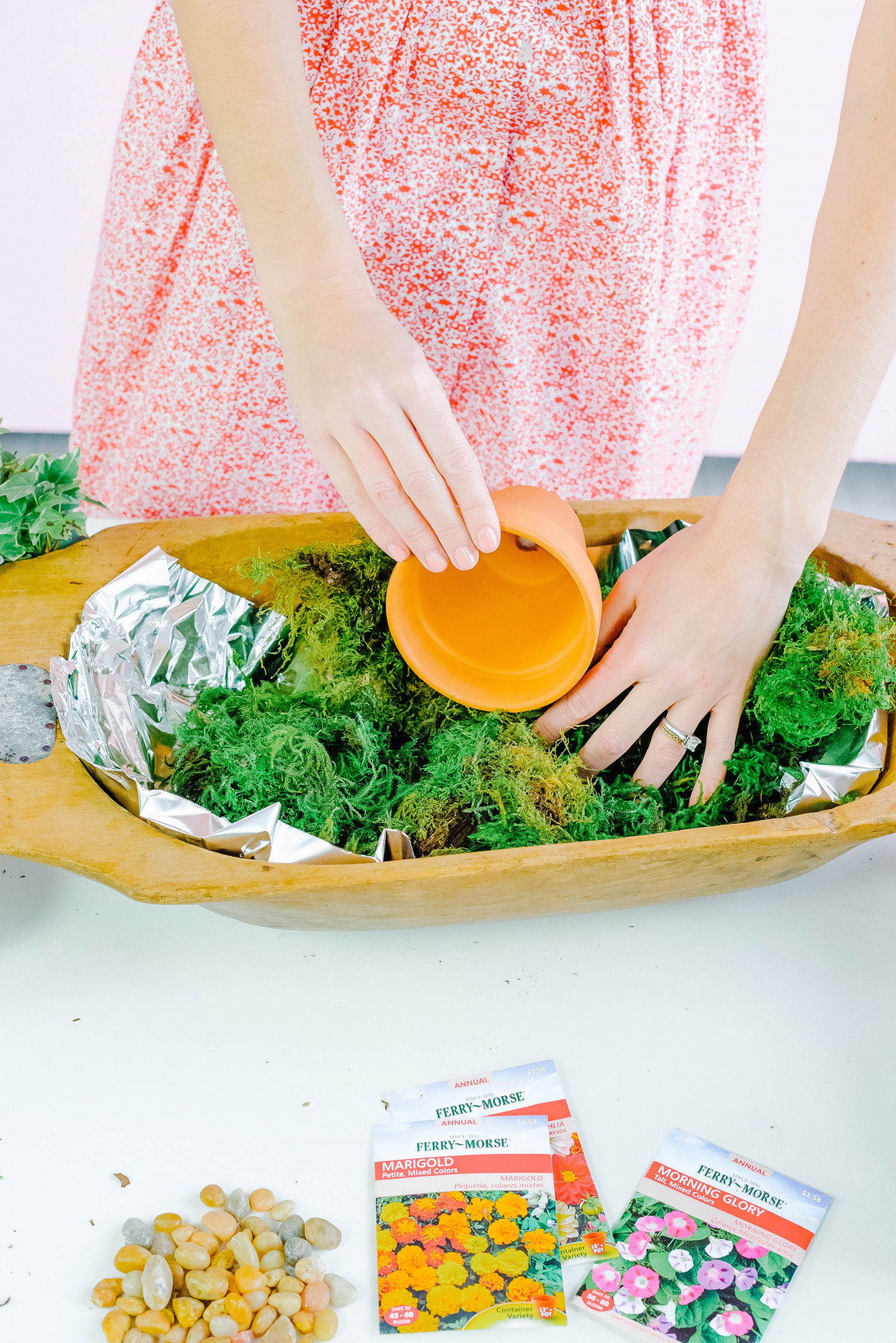
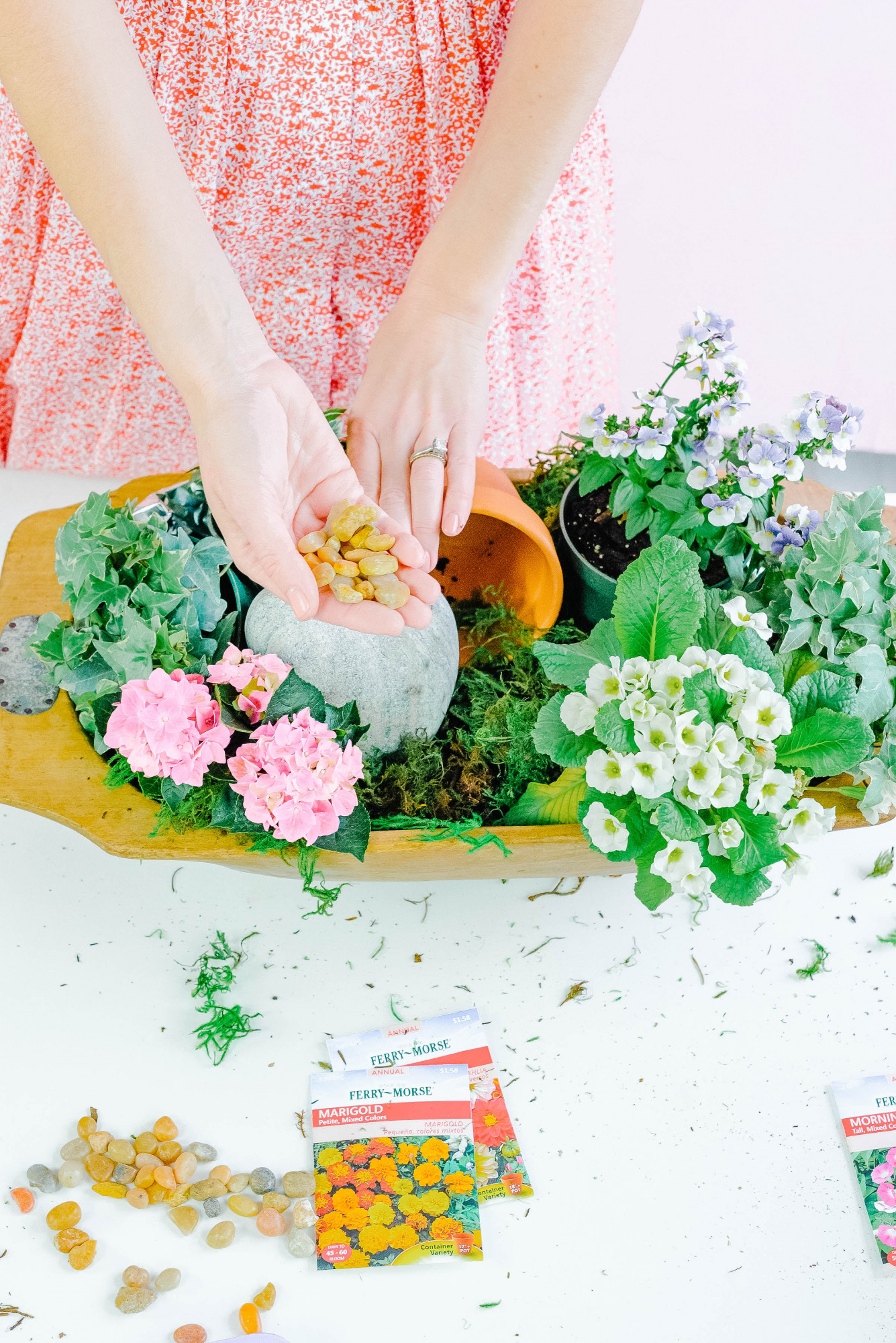
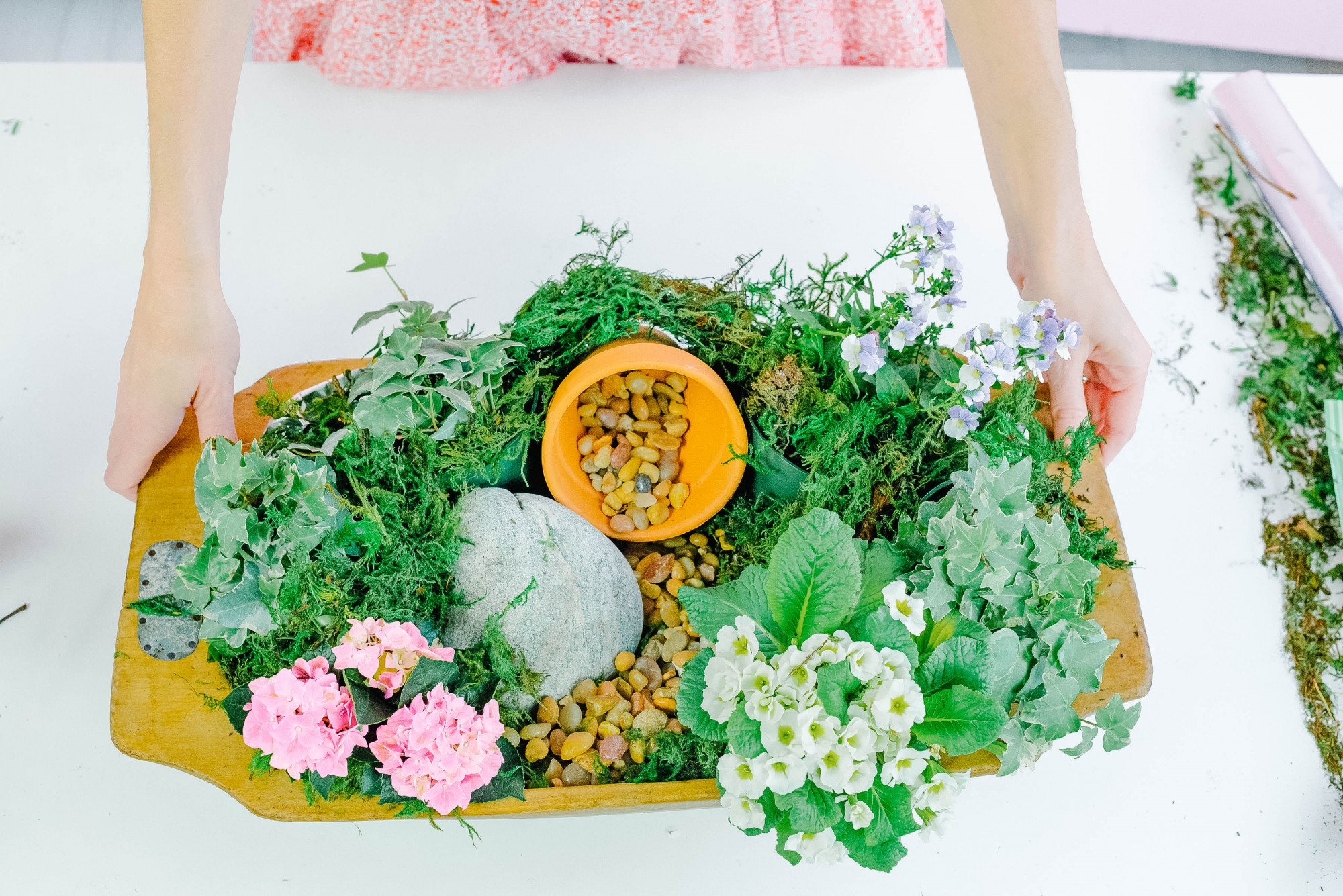
We like to keep the stone rolled in front of the “tomb” until Easter Sunday. We used a clay pot for the tomb but you can get creative with it.
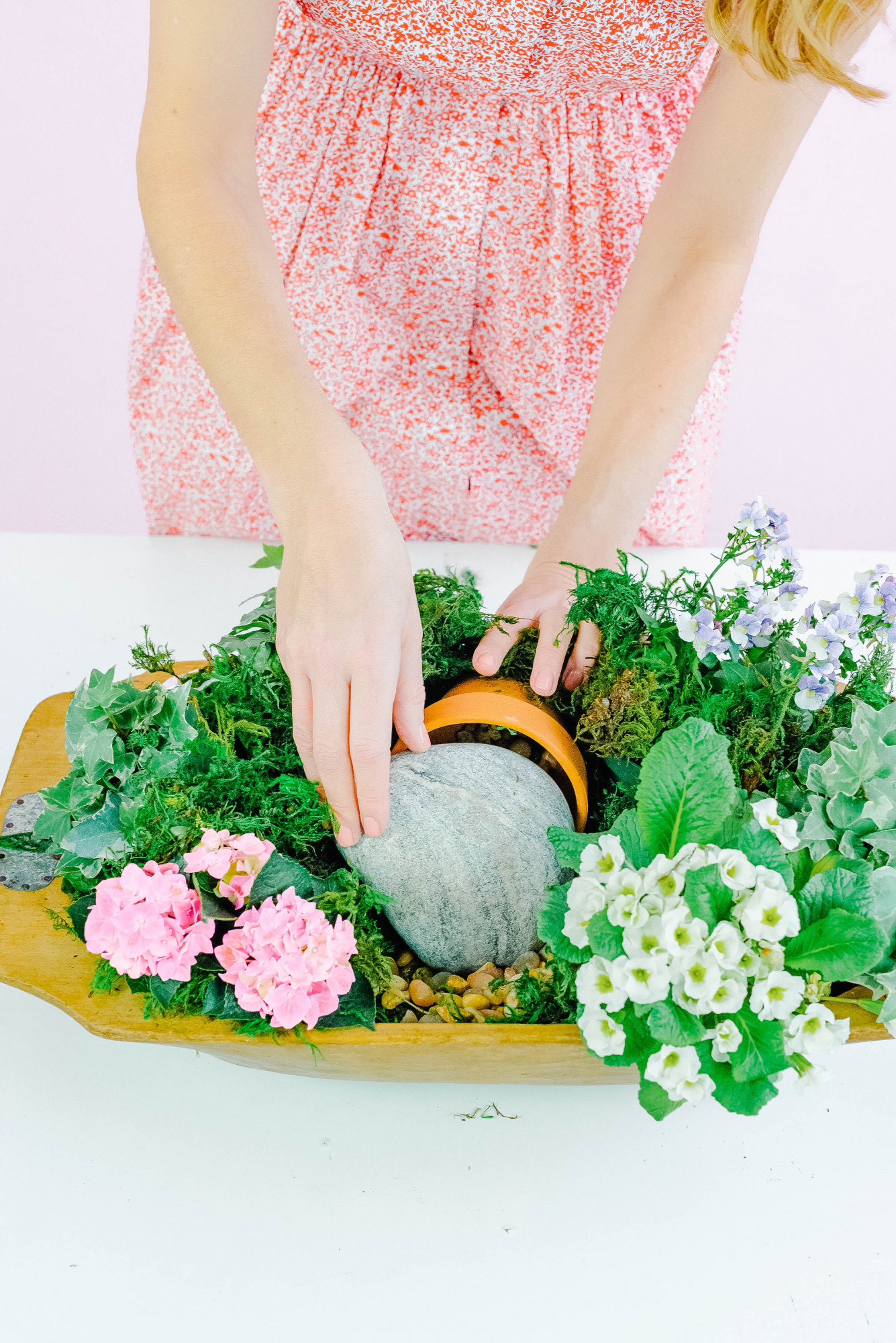
Scripture References:
- Matthew 27:57-66
- John 19:38-42
- Luke 24:1-6
- See children’s Bible we love in this post



So pretty! We made these at my most recent MOPS group meeting 🙂
Love the Easter Garden idea. I have a couple of old bread bowls. Plan to make for my grands. Such a good way to show how the tomb was empty.